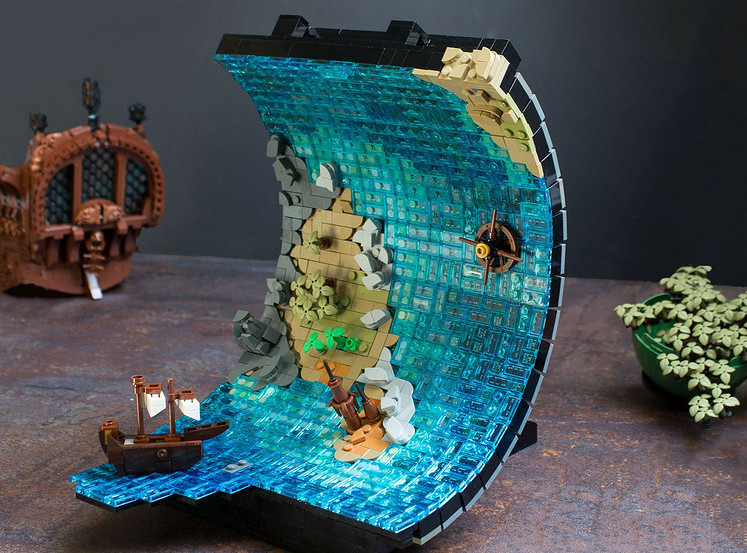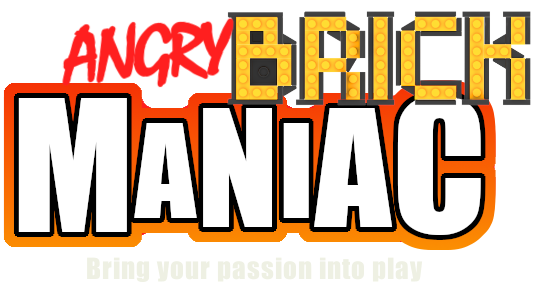Hey what’s up, maniacs? Today we’re going to be discussing some of the best LEGO pieces – my Top 7 most useful, in fact! This overview is not going to focus on newly released elements, which have not yet stood the test of time.
Instead, the rationale for these picks considered their encompassing nature. The specific bricks to follow are given as examples of broader categories of usefulness.
Two important criteria are:
Function: The following LEGO parts are primarily utilitarian. As such they typically perform a task without necessarily looking too pretty. These pieces are good for making an understructure, or for providing the connections to create a basic surface area which can then be embellished. Such elements can easily be repurposed and reused and tucked away within a build in countless ways.
General purpose: As I’ll soon briefly divulge, I’m not a purist when it comes to LEGO bricks, pieces, “elements”, or what-have-you. With that said, general purpose LEGO indisputably offers a lot of flexibility for use – no fuss, no rocket-science, no wondering “how can I actually use this piece creatively?” For the most part, the purpose of these pieces is self-evident and intuitive. They are foundational.

According to Brick Architect, “…there are about 20 general-purpose LEGO SYSTEM parts introduced each year, and about 5 general-purpose LEGO Technic parts.”
Regardless of the new part introductions, LEGO builders, like any craftsman, each have their own existing penchants and preferred methods for part usage. Some disdain highly specialized parts while others use them to awesome effect. I tend to greatly appreciate specialized pieces to a certain extent myself, but this list does not include any.
So without further ado, let’s dive into the bricks! }B^ ]
Embellish to Your Heart’s Content! The Slope 30 1 x 1 x 2/3.

Also known as the “cheese slope”, this is among the smallest LEGO pieces yet made. Because of the tiny size, it can be used to create detail and texture – anything from terrain to architectural detail to “hair”. Vary the height by adding a plate (a 1×1, for example) underneath, or rotate a couple in a group to create some interesting effects.
Get Practical with the Best LEGO Pieces. The Plate Bracket 1 x 2 – 1 x 2.

The LEGO bracket category in general is among the best LEGO parts due to how super useful it is. Basically, whenever you see a studs-on-the-side brick, consider it a new friend! More and more bracket colors are becoming available, so it is becoming less of an issue to try and hide them within creations of mismatched color.
This specific piece in particular is an ideal size for a wide range of unobtrusive applications. When used in conjunction with other plates or bricks, the bracket offers immense potential for building sideways, as well as creating more structural stability.
Effortlessly Start from Scratch. The Brick 1×1 with Headlight.

Also known as a type of “headlight brick”. This kind of LEGO element is the bread and butter of the SNOT (studs not on top) building style. If you really want a brain teaser, combine headlight bricks with brackets to see just how many directions you can build in all at the same time! You can also use this type of element to offset tile pieces and create textural details on the facades of buildings.
Abandon The 90 Degree Rut. The Hinge Plate 1 x 4.

LEGO hinges in general – both the plate and brick variations – are awesome – especially for SNOT techniques! Use them to build at angles less than or greater than 90 degrees. If you want to build walls at a unique angle, or if you want to add an interesting angular/slanted/diagonal shape to a vehicular model, hinges are your go-to starting point.
Instantly Change Up the Rules. The Plate 2 × 2 With 1 Stud.

Also called a “jumper plate” or “jumper tile”, this family of LEGO parts makes a great companion to vertical hinged building styles. In other words, snap some of these pieces down, and use some trial and error to find out what angles you can build at with a hinge plate!
The offset stud in the center of this piece facilitates increased architectural shaping. LEGO plates and bricks always have an even number of studs: 1×2, 1×4, 1×6, 2×2, 2×4, 2×6, etc., etc. This facet of the LEGO building system can make it difficult to build from a center point. (Or it can be a fun challenge to circumvent, depending on your mood!)
So with a 2×2 jumper plate, builders are no longer confined to the default spacing dimensions. Midpoints in an even-numbered system are simpler to achieve. And because of the offset stud, this piece also permits the easy creation of suble changes in depth – like a threshold around a door.
A Genius Way to Tap Into Your Inner Designer. The LEGO Arch.

Yeah, I cheated with this one. I simply could not choose one type of LEGO arch. There is a great variety of arch size, shape, and color, and they are all extremely useful for traditional as well as non-traditional applications. Build those bridges and viaducts and transform your world… Or add some slick ergonomic curvature to a spacecraft, who knows!
Harness Mind-blowing Power with Transparent LEGO Pieces.

Okay okay, yes I know I couldn’t help it again. Nothing could be done, picky reader! This is not a specific LEGO piece, but a whole attribute category.
If you want to instantly avoid making a static model, incorporate some energetic transparency to liven things up.
Using simple pieces in glorious fashion, behold Ralf Langer’s Land Ahoy!
And how awesome is it to mimic water with LEGO! Transparent tiles, 1×1 plates, and round tiles are just a measly few examples of how different types of water can be represented by the various colors available in LEGO.
Since there are simply too many possibilities to list, just remember a basic rule of thumb: if it’s transparent, prize it! You never know how inspiration will hit and give you a use for the part.
Extra Extra! A Brilliant Additional Piece.

This is technically not a LEGO “piece”, so it is not part of my Top 7. However, experienced builders all know how heavenly it can be to have at least one handy! The brick separator is an essential tool to make it easier to pry apart parts that simply seem to enjoy being stuck together a little too much.
Separate plates without separating your fingernail from your finger, and without resorting to using your teeth to bite the pieces apart (and yes, I’ll confess to this offense)! So Hallelujah! All praise the brick separator!

Now that you know my Top 7 best LEGO parts, you might have a hankering to go start building something. Go find how many of these pieces you currently have, and what you can come up with by using them.
I am also interested to know your thoughts on the LEGO pieces selected above, and how you acquired or purchased them, so sound off in the comments!
Have fun collecting parts with these deals! Affiliate links can be found below. As an Amazon Associate I earn from qualifying purchases.
